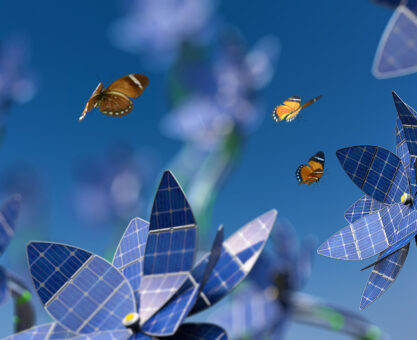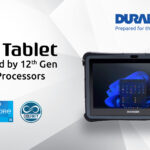In this article for Field Service News, Sami Eric, UK Country Manager at Vimcar, discusses the benefits of digitalisation in fleet management.
With businesses looking to increase their fleets in the wake the Coronavirus pandemic, the pressure is on to efficiently and successfully keep track of any new vehicles added to growing fleets. In a recent survey by Vimcar, a quarter (24%) of fleet managers said they spend half their working day on spreadsheets, with almost half of fleet managers finding spreadsheet set up too time consuming and 37% say it leaves room for mistakes. What’s more, there are still some who have not made the switch to digital spreadsheets, as 10% of those surveyed are still using pen and paper to keep tabs on vehicles, drivers, regulations and more.
Those fleet managers using spreadsheets or pen and paper to track costs, etc. are clearly not utilising their data to analyse the efficiency of their fleets. Yet, according to thousands of key decision makers in a recent survey, 75% believe that ‘data plays an important role in underpinning business decision making’.
With the challenges facing business growth, including economic uncertainty, Brexit, driver shortages, changes in road regulations and emission charges, there is a need for fleet managers to utilise data effectively in order to keep track of the numerus changes unfolding and make key business decisions. Efficiency and accuracy are crucial, and without it, problems arise. But the benefits of streamlining fleet management processes will go beyond efficiency and time saving.
WHY FLEET MANAGEMENT SOFTWARE IS SO IMPORTANT
Fleet management software is a broad term that describes the work required to keep fleet vehicles safe and operational at all times. Unexpected vehicle breakdowns, unplanned trips and hefty fines for expired vehicle documentation are all common fleet management issues that can be solved with more efficient ways of fleet tracking, which is often part of fleet management software. Modern tools that draw on data analysis gives a more in-depth knowledge of how a fleet is running and makes it easier to spot any potential issues ahead of time. Businesses that are still using paper logs to track their fleet are at a much larger disadvantage and run the risk of overlooking vehicle document renewal deadlines, misplacing mileage logs and more.
With the current issues around HGV driver shortages, fleet management is proving to be even more vital for companies keeping up with increased customer demands. As a temporary solution to the driver shortage, the government relaxed the HGV driver’s hours rules, meaning drivers can increase their daily driving limit from 9 hours to 11 hours twice a week. However, it’s up to each company to ensure drivers are properly tracking and sticking to their hours.
The problem is that many companies lack proper oversight of their drivers’ movements, and few can afford steep fines from incompliance. Plus, when you don’t monitor drivers, resources inevitably get wasted. And during a driver shortage, efficiency is essential.
THE DIGITAL SWITCH AND ITS BENEFITS
SMEs that have not yet digitalised their fleet are at a significant disadvantage compared to those who have. Without fleet management software, it’s impossible to tell where each driver is and whether they’re running on time or within the desired driving hours. That also means customers can’t be provided with accurate ETAs, nor can they be given concrete proof of delivery or pickup.
Without this digital software, fleet managers have to monitor driving hours with manually-filled mileage logs, which take longer to go through and are easily misplaced. With fleet management software, users are able to optimisie drivers’ routes, which not only reduces travel time, but also helps to decrease fuel expenses and optimise driving behaviour.
Vimcar’s survey found that 1 in 3 SMEs digitalised their fleet during the Covid pandemic. Of those, 94% agreed that adopting more technology has directly benefited their business by making services more efficient, improving the customer experience and it making employees’ lives easier.
As the pressure grows for business of all sizes to continue to build back, whilst maximising efficiency and satisfying customers’ demands for deliveries, using data to provide insights and analysis on how fleets are performing is key. With clarity comes efficiency, but also helps to relieve the stress from fleet managers and drivers, when a fleet is well managed and under control.
TIPS AND TACTICS TO SUPPORT THE SWITCH FROM EXCEL TO A FLEET ADMIN TOOL
Tracking vehicle hours: If you know how long a vehicle is booked for, you know how long it will be driven for and which driver you need to follow up with if they do not drive the hours specified.
Fuel consumption: Ensure your fleet management software supports the fuel card you use. This makes it much easier to keep track of fuel costs, which are undoubtedly one of the biggest expenditures for a fleet.
Take time upfront to input important dates and tasks: Regular tasks and deadlines such as contract expirations or MOTs can quickly creep up when they are not properly managed. By taking the time at the start to input this data will not only save a lot of time in the long run but will ensure you never miss an important deadline.
Get the guidance you need: Make sure your fleet software provider takes the time to walk you through the software – either in person or remotely. This will give you a good understanding of how each aspect of the software works and will allow you to make the most of all of its functionality. At the very least, be sure your provider has a high level of customer service so if you do have any questions you can get through to someone easily.
Automated workflows: Where possible, set up automated workflows to help save time, allow real-time improvements to your fleet and give you reduce running costs.














